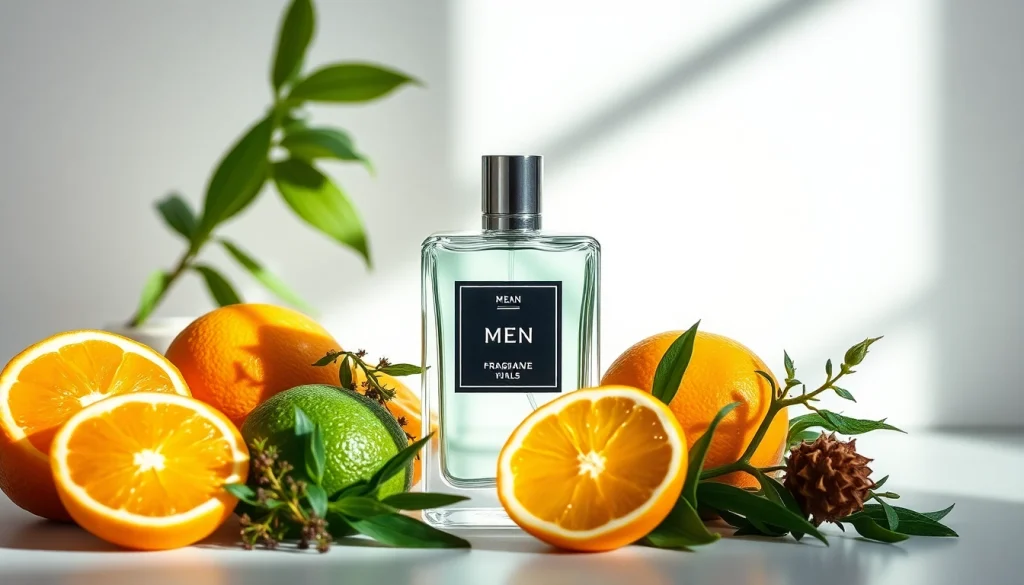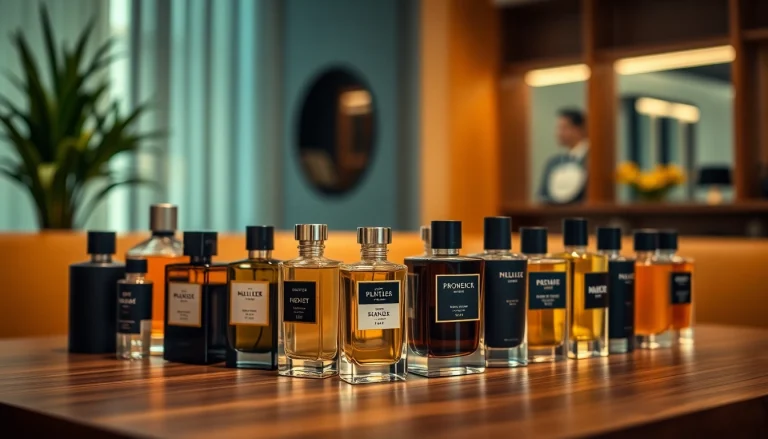
Understanding Men’s Fragrance
Fragrance has long been an integral part of personal grooming and grooming culture. For men, selecting the right scent can articulate individuality, uplift moods, and leave lasting impressions. While the world of men’s fragrance may seem overwhelming, understanding the nuances of scent can simplify the decision-making process and enhance the experience of finding your signature aroma.
What Makes a Scent Masculine?
Masculinity in fragrances is often characterized by a few distinct elements. Generally, these scents lean toward richer, deeper notes that exude strength and complexity. Think of warm woods, aromatic spices, and fresh herbal essences. Traditional masculine scents such as leather, tobacco, and certain florals portray an image that resonates with many men, conveying confidence and sophistication. However, masculinity in fragrance is evolving; modern interpretations welcome fresh, clean scents that combine citrus, marine, and green notes, challenging the stereotypes of traditional masculinity.
The Vocabulary of Fragrance Notes
Understanding fragrance notes is essential in navigating the landscape of men’s fragrances. Fragrance is generally structured in three layers: top, middle, and base notes. Top notes are the initial scents that hit the nose, often fresh and citrusy, like bergamot or grapefruit. Middle notes, or heart notes, develop after the top notes dissipate and consist of more rounded scents like lavender or geranium. Finally, base notes are the foundational scents that linger the longest, including deeper aromas like sandalwood, musk, or amber. Together, these elements create a complex experience that defines the fragrance.
Fragrance Families Explained
Fragrances can be categorized into several families, making it easier for men to find a scent that resonates with their personality. Here’s a brief overview:
- Citrus: Bright and invigorating, citrus fragrances often feature notes of lemon, orange, and bergamot. They are ideal for casual, daytime wear.
- Woody: Woody fragrances emphasize notes like sandalwood and cedarwood, evoking a sense of warmth and earthiness. They are often associated with more formal or evening wear.
- Spicy: Featuring notes such as pepper, cinnamon, and clove, spicy fragrances are bold and adventurous, catering to those who want to make a statement.
- Aromatic: Aromatic scents typically contain herbal notes like basil, rosemary, or mint, providing a fresh and uplifting experience.
- Floral: While traditionally seen as feminine, many modern fragrances blend floral notes with earthy or woody ones to create balanced and appealing scents for men.
Choosing the Right Fragrance
Consider Your Lifestyle and Activities
Your daily life plays a significant role in fragrance selection. If you work in a corporate environment, you might want to opt for subtle, sophisticated scents that won’t overwhelm your colleagues. Fresh, clean fragrances or muted woody notes can be perfect for the office. If you are a social butterfly, vibrant, bold scents may suit your lively interactions, giving you a unique edge. Moreover, consider the seasons: lighter, fresher scents for summer and richer, heavier scents for winter can harmonize with your environment.
The Importance of Skin Chemistry
Fragrance doesn’t smell the same on everyone due to unique skin chemistry, which is influenced by skin type, diet, and even hormones. Oils in the skin can alter how a fragrance develops over time. It’s crucial to test fragrances on your skin rather than relying solely on scent strips. Allow the fragrance to evolve on your skin for a couple of hours to see if it works harmoniously with your body chemistry. What might smell delightful on one person could become overpowering on another.
How to Test Fragrances Effectively
To effectively test a fragrance, follow these simple steps:
- Choose a few scents that appeal to you and spray one on each wrist. Avoid applying to your clothes as it might mix with other fabrics.
- Let the fragrance settle for a few moments before smelling it again. Do not rush—give it time to develop.
- Take note of how the fragrance evolves on your skin over a couple of hours, considering the transition from top notes to base notes.
- Consult friends or family for a second opinion; they may provide insights that you might miss.
Top Men’s Fragrance Recommendations
Classic Scents That Never Go Out of Style
Some fragrances have stood the test of time and remain beloved classics for a good reason:
- Acqua Di Gio by Giorgio Armani: Launched in 1996, this aquatic fragrance is known for its fresh, uplifting notes of bergamot and jasmine.
- Dior Sauvage: With its spicy and woody profile, Sauvage combines notes of Calabrian bergamot and pepper, offering a rugged charm.
- Chanel Bleu de Chanel: This scent epitomizes sophistication with its blend of citrus, woods, and a hint of incense.
Trendy Fragrances for the Modern Man
In the world of fragrances, new releases often capture the spirit of the times:
- Yves Saint Laurent Y: This modern classic mixes fresh bergamot with deep woody notes, perfect for a contemporary appearance.
- Tom Ford’s Ombre Leather: Evoking the essence of leather, this fragrance combines floral and spicy notes, creating an alluring blend.
- Creed Aventus: Celebrated for its refined scent, Aventus features notes of pineapple, birch, and musk, making it a favorite among trendsetters.
Best Budget-Friendly Options
High-quality fragrances don’t have to break the bank. Here are some excellent budget options:
- Paco Rabanne Invictus: An energetic scent loaded with fresh notes, it provides great value without compromising on allure.
- Calvin Klein CK One: A refreshing citrus fragrance that works well for both men and women, demonstrating versatility for everyday use.
- Nautica Voyage: Known for its aquatic and green notes, this fragrance is an affordable choice that evokes the fresh essence of the sea.
Layering and Wearing Fragrance
How to Layer Scents for a Unique Blend
Layering fragrances can provide a personalized scent that reflects your character. When layering, consider starting with a base scent. For instance, if you opt for a woody scent, it can be paired with a fresher, citrus-based fragrance to lighten and brighten the overall profile. Always apply the heavier scent first and follow it with lighter fragrances. Test different combinations to find your ideal mix, and remember to keep a clear idea of how each scent interacts during wear.
Applying Fragrance for Longevity
To maximize the longevity of your fragrance, application matters significantly. Here are some tips:
- Apply on pulse points: Areas like the wrists, behind the ears, and the base of your throat generate heat, giving your fragrance a boost.
- Moisturize before application: Layering fragrance on unscented lotion can help it adhere better and last longer.
- Avoid rubbing wrists together: While you may instinctively rub your wrists, this can break down the fragrance notes and affect how they develop.
Fragrance Mistakes to Avoid
Many people make common mistakes when it comes to wearing fragrances. Here are a few to watch out for:
- Overapplication: A good rule of thumb is to apply no more than two to three sprays. Your scent should be a subtle aura, not an overpowering cloud.
- Ignoring the season: Selecting fragrances that don’t match the climate can lead to discomfort. Light florals work best in summer, while richer scents fit winter.
- Not refreshing: As scents can fade during the day, consider bringing a smaller bottle to refresh your fragrance as needed.
Caring for Your Fragrance Collection
How to Properly Store Fragrance
The longevity and integrity of your fragrances heavily depend on proper storage. Keep them away from direct sunlight, extreme temperatures, and humidity. A dark, cool place is ideal—consider using a drawer or a designated box. Ensure the caps are tightly sealed when not in use to prevent evaporation or contamination.
Understanding Expiration Dates
Like many products, fragrances do have a shelf life. Typically, they last between three to five years. Over time, the scent may change due to oxidation, leading to a less pleasant aroma. If you notice a shift in color or a deterioration in scent quality, it’s time to consider discarding the bottle.
When to Refresh Your Fragrance Wardrobe
Refreshing your fragrance collection can be beneficial for various reasons. If your scent no longer resonates with your personality or lifestyle, or if you find yourself reaching for the same fragrance too often, it may be time to explore new options. Seasonal changes can also prompt an adjustment in fragrance; consider lighter scents for summer and heavier ones for winter. Regularly updating your selection allows you to embrace new inspirations and trends in men’s fragrance.





